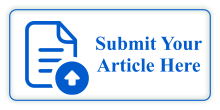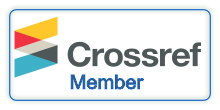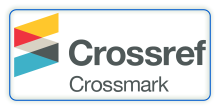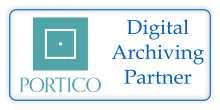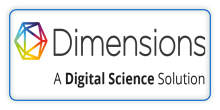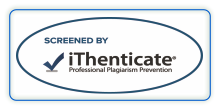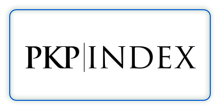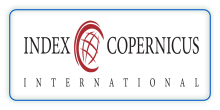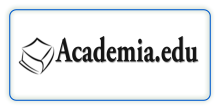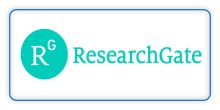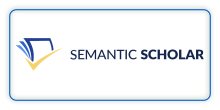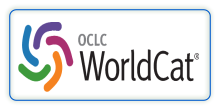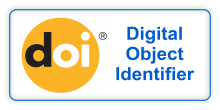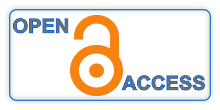THE IMPACT OF STRATEGIC LEADERSHIP ON ORGANISATIONAL AMBIDEXTERITY AT THE KING ABDULLAH II DESIGN AND DEVELOPMENT BUREAU (KADDB)
DOI:
https://doi.org/10.29121/ijoest.v5.i3.2021.193Keywords:
Strategic Leadership, Organisational Ambidexterity, King Abdullah II Design, Development Bureau (KADDB)Abstract
This study aimed at identifying the impact of strategic leadership dimensions, such as defining strategic direction, investing strategic capabilities, and implementing balanced organisational supervision, on the organisational ambidexterity dimension at the King Abdullah II Design and Development Bureau (KADDB).
The sample consisted of the directors at top and middle management at KADDB, totalling 92 directors. Further, a questionnaire was used as a tool for data collection through Google Forms for the convenience of data collection and edition. 86 valid questionnaires were retrieved before the analytical descriptive approach was used, and, following this, data analysation and hypotheses tests were carried out according to the descriptive statistic measures and statistical analysis program Smart PLS v. 3.
The results indicated high relative importance of the strategic leadership and organisational ambidexterity at KADDB, and, notably, a statistically significant impact of strategic leadership was approved on organisational ambidexterity at KADDB at the significant level (P ≤ 0.05). This significant impact was approved for all the dimensions of strategic leadership except for the dimension ‘promoting human capital’.
In light of the findings, the researchers recommended that KADDB should: improve organisational ambidexterity and its activities (exploration and exploitation) by organising special steering committees for this purpose within the business development department at KADDB; pay more attention to environmental scanning; balance the patterns of results-based monitoring and control; empower employees; and, finally, improve the current recruitment, promotion, and reward systems.
Downloads
References
A., Almomani, M., Abujamous, H., & F. (2020). Decision support system for disaster management proposed conceptual framework. Int. J. Manag. Appl. Sci, 6(4).
Abualoush, S., Masa’deh, R., Bataineh, K., & Alrowwad, A. (2018). The Role of Knowledge Management Process and Intellec- tual Capital as Intermediary Variables between Knowledge Management Infrastructure and Organization Performance. Interdisciplinary Journal of Information, Knowledge, and Management, 13, 279–309. Retrieved from https://dx.doi.org/10.28945/4088 10.28945/4088
Al-Alwan, A., Artimah, H., Al-Lawzi, & M. (2019). The strategic leadership competencies and their effect on achieving organi- zational excellence, through the mediating role of organizational commitment. Business and Management Journal, 7(1), 34–57.
Al-Ammary, S. S., Al-Najjar, & J, F. (2020). The Impact of Organizational Ambidexterity on Strategic Orientations: The Mediating Role of Organizational Innovation in Private Hospitals in Jordan. European Journal of Scientific Research, 156(1), 58–77.
Alkhaffaf, M. (2018). Investigating the Mediation Role of Information Technology (IT) Components in the Relationship between Knowledge Management (KM) Processes and Decision-Making. International Journal of Business and Management, 13(4), 108–108. Retrieved from https://dx.doi.org/10.5539/ijbm.v13n4p108 10.5539/ijbm.v13n4p108
Al-Zahrani, I. (2018). Strategic leadership and its impact on developing organizational learning capabilities: A field study at Umm Al-Qura University. International Journal of Educational Research, 42(2), 189–238.
Baškarada, S., Watson, J., & Cromarty, J. (2016). Strategic Leadership and Organizational ambidexterity in Australian Defense Industry Companies. Journal of Management Development, 10(1), 778–788.
Beatty, K., & Quinn, L. (2012). The role of strategic leadership team in organizations: center for creative leadership. Greensboro, North Carolina, USA: Center for Creative Leadership.
Beer, M., & Eisenstat, R. A. (2000). The six silent killers of strategy implementation“. Sloan Management Review, 29.
Boal, K. B., & Hooijberg, R. (2000). Strategic leadership research. The Leadership Quarterly, 11(4), 515–549. Retrieved from https://dx.doi.org/10.1016/s1048-9843(00)00057-6 10.1016/s1048-9843(00)00057-6
Bodwell, W., & Chermack, T. J. (2010). Organizational ambidexterity: Integrating deliberate and emergent strategy with sce- nario planning. Technological Forecasting and Social Change, 77(2), 193–202. Retrieved from https://dx.doi.org/10.1016/ j.techfore.2009.07.004 10.1016/j.techfore.2009.07.004
Creswell, J. (2009). Research design: Quantitative, qualitative and mixed method approach. London: Sage.
Danneels, E. (2003). Tight-loose coupling with customers: the enactment of customer orientation. Strategic Management Journal, 24(6), 559–576. Retrieved from https://dx.doi.org/10.1002/smj.319 10.1002/smj.319
Davies, B., & Davies, B. J. (2005). Strategic Leadership. In B. & Davies (Eds.), Essen-tials of school leadership. Paul Chapman Pub- lishing.
Dhliwayo, S., & Vuuren, J. J. V. (2007). The strategic entrepreneurial thinking imperative. Acta Commercii, 7(1), 123–134. Retrieved from https://dx.doi.org/10.4102/ac.v7i1.20 10.4102/ac.v7i1.20
Duncan, R. B. (1976). The Ambidextrous Organization: Designing Dual Structures for Innovation. The Management of Organiza- tion, 1, 167–188.
Elfindah, P. (2020). Integrating Ambidexterity into the Modern Manufacturing Era of Industry 4.0. Int. J Sup. Chain. Mgt, 9(4), 58–64.
Farghal, M. (2019). The best time to plant a tree. The Business Year, Global Media Group. UK, London.
Fornell, C., & Larcker, D. F. (1992). Evaluating Structural Equation Models with Unobservable Variables and Measurement Error. Journal of Marketing Research (JMR), 18(1).
Gibson, C. B., & Birkinshaw, J. (2004). The antecedents, consequences and mediating role of organizational ambidexterity.
Academy of Management Journal, 47, 209–226.
Gill, R. (2011). Theory and Practice of Leadership. UK, London: Sage Publications.
Hagen, A., Hassan, M. T., & Amin, S. G. (1998). Critical strategic leadership components: An empirical investigation. SAM Advanced Management Journal, 63(3), 39–39.
Hair, J. F., Jr, Hult, G. T., Ringle, C. M., & Sarstedt, M. (2017). Primer on partial least squares structural equation modeling. SAGE Publications, Inc.
Hill, C. W., & Jones, G. R. (2016). Strategic Management Theory: An Integrated Approach. USA, masatshusts, buastan: Houghton Mifflin, Co.
Hitt, M. A., Haynes, K. T., & Serpa, R. (2010). Strategic leadership for the 21st century. Business Horizons, 53(5), 437–444. Retrieved from https://dx.doi.org/10.1016/j.bushor.2010.05.004 10.1016/j.bushor.2010.05.004
Hitt, M. A., Ireland, R. D., & Hoskisson, R. E. (2009). Strategic Management: Competitiveness and Globalization - Concepts and Cases. USA, Ohaio: South Western Thomson Learning.
Hitt, M. A., Ireland, R. D., & Hoskisson, R. E. (2011). Strategic management: Competitiveness and globalization. USA, Mason, OH: Cengage Southwestern Publishing.
Hoskisson, R., Hitt, M., & Ireland, R. D. (2004). Strategic leadership. in competing for advantage. Thomson Learning.
House, R. J., & Aditya, R. N. (1997). The Social Scientific Study of Leadership: Quo Vadis? Journal of Management, 23(3), 409–473.
Retrieved from https://dx.doi.org/10.1177/014920639702300306 10.1177/014920639702300306
Hrebiniak, L. G. (2008). Making Strategy Work: Overcoming the Obstacles to Effective Execution. Ivey Business Journal, 72(2), 1–6.
Ireland, R. D., & Hitt, M. A. (2005). Achieving and maintaining strategic competitiveness in the 21st century: The role of strate- gic leadership. Academy of Management Perspectives, 19, 63–77. Retrieved from https://dx.doi.org/10.5465/ame.2005.19417908 10.5465/ame.2005.19417908
Jansen, J., George, G., Den, B. V., Frans, A., & Volberda, W. (2010). Senior team attributes and organizational ambidexterity: The moderating role of transformational leadership. Journal of Management Studies, 45(5), 982–1007.
Judge, W., & Blocker, C. (2008). Commentary organizational capacity for change and strategic ambidexterity Flying the plane while rewiring it. European Journal of Marketing, 42(9), 915–926.
Kaplan, R. S., & Norton, D. P. (2004). Strategy Maps: Turning Intangible Assets into Tangible Results. Boston, MA: Harvard Business School Press.
Kitonga, D. (2017). SL practices and organizational performance in not-for-profit organizations in Nairobi county in Kenya. Unpub- lished Doctoral Dissertation. Kenya.
Lear, L. W. (2012). The relationship between strategic leadership and strategic alignment in high-performance companies in South Africa. Doctoral dissertation.
MITCHELL, R. S., LYNCH, L. J., & CASIMIR, D. J. (2007). A new method of shelling green peas for processing (Vol. 4) (No. 1). Harlow, England: Wiley. Retrieved from https://dx.doi.org/10.1111/j.1365-2621.1969.tb01497.x 10.1111/j.1365-2621.1969.tb01497.x
Mohammad, A., & Hijawi, G. (2019). Impact of Organizational Ambidexterity on Environmental Turbulence of telecommunication companies in Jordan: Resource Flexibility as a Moderator. Interceincia Journal(5), 44–44.
Mubarak, M. F., & Yusoff, W. F. W. (2019). Impact of Strategic Leadership on Strategy Implementation in Malaysian Industrial Companies. British Journal of Management and Marketing Studies, 2(1), 32–43.
Muzee, H., Bagire, V., & Ngoma, M. (2016). Strategic Leadership and Employee Engagement, Evidences from an African Industrial Setting. OALib, 03(08), 1–10. Retrieved from https://dx.doi.org/10.4236/oalib.1102907 10.4236/oalib.1102907
Najm, A., Al-Nuaimi, A, M., & A. (2012). Leadership intelligence (A vision in strategic leadership). Paper presented at the 11th Annual Scientific Conference. Business Intelligence and Knowledge Economy.
Najmaei, A., Quazi, Z., & Behnia, M. (2017). Balancing strategic leadership: a synthesis of balanced scorecard and strategic leader- ship theories. Macquarie Graduate School of Management. Sydney, Australia.
Neuman, W. L. (2000). Social Research Methods(2).
Neumann, Y., & Neumann, E. F. (1999). The president and the college bottom line: the role of strategic leadership styles. International Journal of Educational Management, 13(2), 73–81. Retrieved from https://dx.doi.org/10.1108/09513549910261131 10.1108/09513549910261131
Norzailan, Z., Yusof, S. M., & Othman, R. (2015). Developing Strategic Leadership Competencies. Journal of Advanced Management Science, 4(1), 66–71. Retrieved from https://dx.doi.org/10.12720/joams.4.1.66-71 10.12720/joams.4.1.66-71
Obeidat, A. (2019). IT adaption with knowledge conversion process (SECI). Management Science Letters, 9(13), 2241–2252.
Obeidat, A. M., Abualoush, S. H., Irtaimeh, H. J., Khaddam, A. A., & Bataineh, K. A. (2018). The role of organisational culture in enhancing the human capital applied study on the social security corporation. International Journal of Learning and Intellectual Capital, 15(3), 258–258. Retrieved from https://dx.doi.org/10.1504/ijlic.2018.094718 10.1504/ijlic.2018.094718
Obeidat, A. M., & Thani, F. B. H. A. (2020). The Impact of Strategic Leadership on Crisis Management. International Journal of Asian Social Science, 10(6), 307–326. Retrieved from https://dx.doi.org/10.18488/journal.1.2020.106.307.326 10.18488/journal.1.2020.106.307.326
O’Reilly, C. A., & Tushman, M. L. (2008). Ambidexterity as a dynamic capability: Resolving the innovator’s dilemma (Vol. 28). Cam-bridge, MA: Elsevier BV. Retrieved from https://dx.doi.org/10.1016/j.riob.2008.06.002 10.1016/j.riob.2008.06.002 O’Reilly, C. A., & Tushman, M. L. (2011). Organizational Ambidexterity in Action: How Managers Explore and Exploit. California
Management Review, 53(4), 5–22. Retrieved from https://dx.doi.org/10.1525/cmr.2011.53.4.5 10.1525/cmr.2011.53.4.5 Palladan, A. A., Abdulkadir, K. B., & Chong, Y. W. (2016). The Effect of Strategic Leadership, Organization Innovativeness, Infor- mation Technology Capability on Effective Strategy Implementation: A Study of Tertiary Institutions in Nigeria. IOSR Journal of Business and Management, 18(09), 109–115. Retrieved from https://dx.doi.org/10.9790/487x-180901109115 10.9790/487x-180901109115
Palm, K., & Lilja, J. (2017). Key enabling factors for organizational ambidexterity in the public sector. International Journal of Quality and Service Sciences, 9(1), 2–20. Retrieved from https://dx.doi.org/10.1108/ijqss-04-2016-0038 10.1108/ijqss -04-2016-0038
Pearce, J. A., & Robinson, R. B. (2007). Formulation, Implementation and Control of Competitive Strategy, (ed). Boston, MA: McGraw-Hill Irwin.
Pisapia, J. (2009). The Strategic Leader: New Tactics for a Globalizing World. Charlotte, NC, USA: Information Age Pub.
Pitelis, C. N., & Wagner, J. D. (2019). Strategic Shared Leadership and Organizational Dynamic Capabilities. The Leadership Quar- terly, 30, 233–242. Retrieved from https://dx.doi.org/10.1016/j.leaqua.2018.08.002 10.1016/j.leaqua.2018.08.002
Preda, G. (2014). Organizational ambidexterity and competitive advantage: Toward a research model. Management and Market- ing Journal, 15(1), 68–74.
Ravasi, D., & M, S. (2016). Responding to Organizational Identity Threats: Exploring the Role of Organizational Culture. Academy of Management Journal, 433–458.
Samba, C., Knippenberg, D. V., & Miller, C. C. (2018). The impact of strategic dissent on organizational outcomes: A meta- analytic integration. Strategic Management Journal, 39(2), 379–402. Retrieved from https://dx.doi.org/10.1002/smj.2710 10.1002/smj.2710
Sayed, A., & Theeb, K. (2019). The impact of strategic leadership on marketing excellence at Jordanian special hospitals. Islamic University for Economic and Managerial Studies, 2, 117–142.
Schreuders, J., & Legesse, A. (2012). Organizational Ambidexterity: How Small Technology Firms Balance Innovation and Sup- port. Technology Innovation Management Review, 17–21.
Sekaran, U., & Bougie, R. (2016). Research methods for business: a skill-building approach. USA, San Francisco; New York: John Wiley and Sons. Inc.
Severgnini, E., Vieira, V. A., & Galdamez, E. V. C. (2018). The indirect effects of performance measurement system and organiza- tional ambidexterity on performance. Business Process Management Journal, 24(5), 1176–1199. Retrieved from https:// dx.doi.org/10.1108/bpmj-06-2017-0159 10.1108/bpmj-06-2017-0159
Sibghatullah, A., & Raza, M. (2020). The Impact of Strategic Leadership on Competitive Advantage: The Mediating Role of Ambidexterity and Information System: Evidence from Islamic Banks in Jordan. IJIIS: International Journal of Informatics and Information Systems, 3(2), 67–80. Retrieved from https://dx.doi.org/10.47738/ijiis.v3i2.67 10.47738/ijiis.v3i2.67
Sidhu, J. S. (2004). Business-Domain Definition and Performance: An Empirical Study. SAM Advanced Management Journal, 40– 45.
Snehvrat, S., Kumar, A., Kumar, R., & Dutta, S. (2018). The state of ambidexterity research: a data mining approach. International Journal of Organizational Analysis, 26(2), 343–367. Retrieved from https://dx.doi.org/10.1108/ijoa-06-2017-1182 10.1108/ijoa-06-2017-1182
Sun, X., Zhu, F., & Sun, M. (2018). How to solve the dilemma of balancing between efficiency and flexibility in project-oriented organizations. Nankai Business Review International, 9(1), 33–58. Retrieved from https://dx.doi.org/10.1108/nbri-04-2017-0016 10.1108/nbri-04-2017-0016
Thompson, J. L. (1997). Strategic management: Awareness and Change (3), International Thompson Business. tials of school lead- ership. London: Paul Chapman Publishing.
Trends in world military expenditure in 2019. (n.d.). , Stockholm international peace research institute. Retrieved from https:// www.sipri.org/
Wheelen, T., Hunger, D., Hoffman, A., & Bamford, C. (2017). Strategic Management and Business Policy - Globalization, Innovation, and Sustainability (15). England; Edinburgh Gate: Pearson Education, Inc.
Wright, P., Kroll, M. J., & Parnell, J. A. (2018). Strategic Management Concepts. Upper Saddle River: Prentice - Hall.
Zaid, A., & N, A. (2016). Testing the Impact of Strategic Leadership on Organizational Ambidexterity: A Field Study on the Jorda- nian Chemical Manufacturing Companies. International Journal of Business and Management, 11(5), 328–328.






